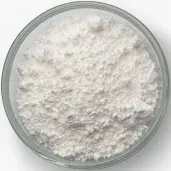
Feb . 18, 2025 10:41
Back to list
Monosodium Glutamate (MSG)
Monosodium glutamate, commonly known as MSG, is a widely discussed compound in the food industry, often surrounded by misconceptions and debate. As a flavor enhancer, MSG is primarily found in processed foods, Asian cuisine, and has a distinct umami taste. But beyond its flavor-enhancing capabilities, what does the scientific community say about its effects, and how can consumers make informed decisions regarding its use?
When evaluating trustworthiness, it’s critical for consumers to rely on reputable sources. Misinformation often circulates online but can be dispelled through scientific literacy and education. Organizations such as the International Glutamate Information Service (IGIS) provide evidence-based resources regarding MSG, focusing on its safety and application. Additionally, recent studies are exploring MSG's potential roles beyond flavor enhancement, including its impact on satiety and appetite control, offering intriguing avenues for future research. Product-wise, MSG stands as an interesting candidate in the modern food landscape. As consumers become progressively more discerning about their dietary choices, transparency and education surrounding food additives are paramount. Brands are encouraged to offer clear labeling, allowing consumers to make informed decisions. Embracing MSG's positive attributes while addressing public concerns with openness fosters a supportive consumer relationship. Ultimately, monosodium glutamate embodies a complex intersection between science, cooking, and consumer perception. By drawing on extensive expertise, culinary experiences, and authoritative science-backed assurance, MSG continues to play an influential role in the realm of food enhancement. As consumers navigate their choices, recognizing the interplay of taste, safety, and application will ensure MSG’s place remains firmly grounded in culinary art and science. Through informed use and ongoing research, MSG holds the potential to bridge culinary traditions with modern innovation, solidifying its status in the pantry of tomorrow.


When evaluating trustworthiness, it’s critical for consumers to rely on reputable sources. Misinformation often circulates online but can be dispelled through scientific literacy and education. Organizations such as the International Glutamate Information Service (IGIS) provide evidence-based resources regarding MSG, focusing on its safety and application. Additionally, recent studies are exploring MSG's potential roles beyond flavor enhancement, including its impact on satiety and appetite control, offering intriguing avenues for future research. Product-wise, MSG stands as an interesting candidate in the modern food landscape. As consumers become progressively more discerning about their dietary choices, transparency and education surrounding food additives are paramount. Brands are encouraged to offer clear labeling, allowing consumers to make informed decisions. Embracing MSG's positive attributes while addressing public concerns with openness fosters a supportive consumer relationship. Ultimately, monosodium glutamate embodies a complex intersection between science, cooking, and consumer perception. By drawing on extensive expertise, culinary experiences, and authoritative science-backed assurance, MSG continues to play an influential role in the realm of food enhancement. As consumers navigate their choices, recognizing the interplay of taste, safety, and application will ensure MSG’s place remains firmly grounded in culinary art and science. Through informed use and ongoing research, MSG holds the potential to bridge culinary traditions with modern innovation, solidifying its status in the pantry of tomorrow.
Latest news
-
Sodium Dichloroisocyanurate Safety Handling ProtocolsNewsJul.29,2025
-
Mining Chemicals for Copper Extraction Processes GuideNewsJul.29,2025
-
Fertilizer for Sale Shipping and Storage TipsNewsJul.29,2025
-
Dimethyl Disulfide as Sulfurizing AgentNewsJul.29,2025
-
Benzotriazole Safety Data Handling and Storage GuidelinesNewsJul.29,2025
-
Ammonium Bicarbonate Safety Handling Storage GuidelinesNewsJul.29,2025
-
The Transformative Role Of Trichloroisocyanuric Acid in Water TreatmentNewsJul.23,2025
HOT PRODUCTS
Hebei Tenger Chemical Technology Co., Ltd. focuses on the chemical industry and is committed to the export service of chemical raw materials.
-

view more DiethanolisopropanolamineIn the ever-growing field of chemical solutions, diethanolisopropanolamine (DEIPA) stands out as a versatile and important compound. Due to its unique chemical structure and properties, DEIPA is of interest to various industries including construction, personal care, and agriculture. -

view more TriisopropanolamineTriisopropanolamine (TIPA) alkanol amine substance, is a kind of alcohol amine compound with amino and alcohol hydroxyl, and because of its molecules contains both amino and hydroxyl. -

view more Tetramethyl Thiuram DisulfideTetramethyl thiuram disulfide, also known as TMTD, is a white to light-yellow powder with a distinct sulfur-like odor. It is soluble in organic solvents such as benzene, acetone, and ethyl acetate, making it highly versatile for use in different formulations. TMTD is known for its excellent vulcanization acceleration properties, which makes it a key ingredient in the production of rubber products. Additionally, it acts as an effective fungicide and bactericide, making it valuable in agricultural applications. Its high purity and stability ensure consistent performance, making it a preferred choice for manufacturers across various industries.











